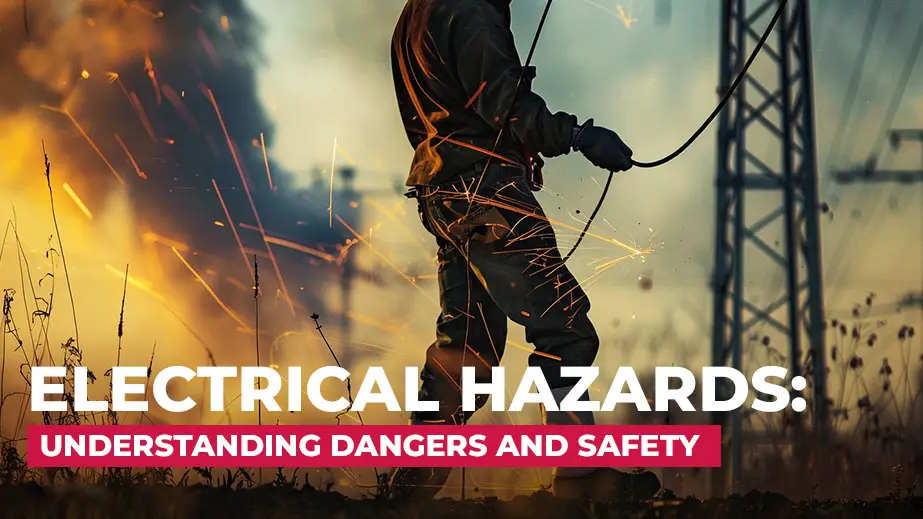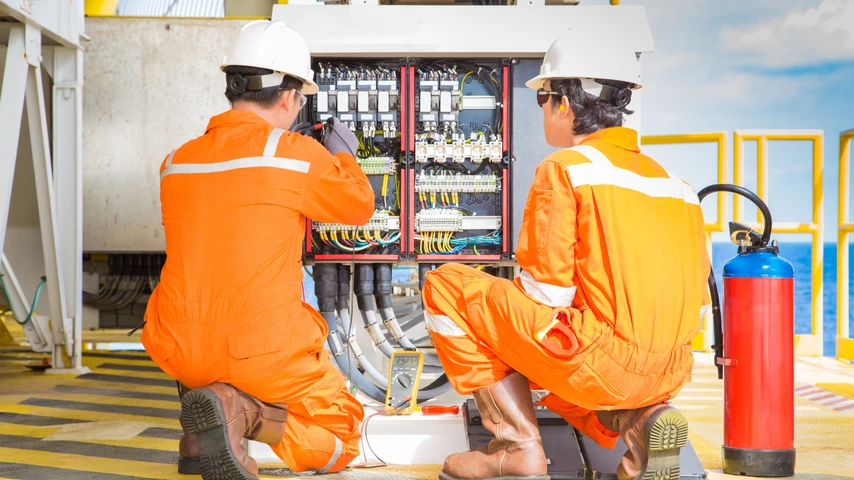Electrical Hazards: Understanding Dangers and Safety


Electricity is a vital energy source used in various industrial and domestic settings. Understanding and awareness of the potential dangers of electricity in the workplace is crucial, as is providing a safe working environment.
Electrical hazards pose a significant risk to workers' safety and can be a significant cause of workplace injury. Such injuries can include the risk of electric shock, electrical burns, and arc flash.
Hazards can be especially prevalent during hot and humid weather conditions when workers are more prone to sweating. Excessive sweating increases the risk of electric shock when using mains-powered tools. It can also cause surface tracking over plastic shells. This can lead to hazardous situations. Welders are prone to electrical hazards. Their gloves and clothing can become soaked in sweat. This creates a better return path for electrical current than the metal they are welding.
Educating and training workers on electrical hazards is essential. This includes avoiding contact with live electrical circuits and ensuring that all electrical equipment is properly maintained and grounded. By taking appropriate safety measures and following proper procedures, workers can reduce the risk of electrical injuries and fatalities in the workplace.
Identifying electrical hazards in any setting involving electricity use,, such as construction sites, workshops, and homes, to prevent electrical injuries. Signs of electrical hazards include damaged or worn-out electrical cords, overloaded outlets or extension cords, and poorly maintained electrical equipment. The following are common signs of electrical hazards:
Workers should follow safety procedures to avoid injury from electrical hazards. They should also use proper protective equipment, such as gloves and safety glasses. In addition, the use of residual current devices and ground-fault circuit interrupters can help prevent electric shocks.
Avoiding the use of mains-powered tools during the hottest part of the day can reduce the risk of injury during hot and humid weather conditions.
The best way to avoid injury from electrical hazards is to follow safety procedures and use proper protective equipment. Here are some tips for staying safe around electricity:
Injuries can range from mild to severe, depending on the shock type and the current amount involved. The following are common types of electrical injuries:
Working near or around underground electrical cables poses a significant hazard and requires careful attention to safety protocols. Working near or above underground cables poses risks. Electrocution, damage to assets, and disruption of electricity can occur. These risks have serious consequences. In addition to causing potential injuries or fatalities, failing to follow proper safety procedures when working with underground cables can result in police investigations, criminal or civil prosecutions, project delays, and lost time injuries. Breaching Regulation 21 of the Electricity Reform (Safety and Technical) Regulations, which requires written authorization from the operator of the electricity infrastructure before working in proximity to underground cables, can lead to severe legal consequences. It's also important to note that certain materials or substances must not be placed or maintained above underground cables, and excavations should not occur near the cables or reduce the depth of ground cover. Underground cable markers must not be tampered with, covered, or removed.
According to the Electrical Safety Foundation International, approximately 2,000 workers in the United States are hospitalized yearly due to electrical injuries. Furthermore, about 600 electrical fatalities occur yearly, with the construction industry being one of the most hazardous areas.

Electrical injuries are a serious and potentially life-threatening hazard that requires immediate medical attention. Whether it's an electric shock, burn, or any other electrical injury, it's essential to know how to respond quickly and effectively to reduce the risk of further damage and improve the victim's chances of survival.
To be able to respond to such situations, it is crucial to have proper first-aid training. Australia Wide First Aid is an organization that offers a range of first aid training courses that include electrical injury response. These courses equip individuals with the knowledge and skills to provide initial care to electric shock and burn victims while waiting for medical assistance.
During the training, participants learn how to recognize the signs and symptoms of electrical injuries and understand the different types of electrical burns. They are also taught how to safely approach a victim injured by electricity and provide immediate care until medical assistance arrives. Additionally, the courses cover important topics such as the use of defibrillators, how to perform cardiopulmonary resuscitation (CPR), and how to manage bleeding.
By taking a first aid training course that includes electrical injury response, individuals can be better prepared to handle emergencies and care for injured victims. This can make a significant difference in the victim's recovery and survival and in the overall safety of the workplace or community.
Electrical hazards are a serious threat to workers' safety and well-being. Understanding the hazards of electricity, identifying electrical hazards, using proper safety procedures and personal protective equipment, and having first aid training are essential in preventing electrical injuries and fatalities.
Workers can stay safe when working with electricity by following these safety measures.

October 1, 2024
Almost every job involves using the body to carry out some type of manual task. Some tasks may be hazardous, causing injuries such as musculoskeletal disorders (MSDs). Knowing how to manage them is a legal responsibility of all workplaces.

January 10, 2024
In Australia, workplace safety is a top priority, and First Aid plays a crucial role in ensuring the well-being of employees. Workplaces are expected to adhere to specific regulations and guidelines outlined by Safe Work Australia. How does your workplace stack up?

November 24, 2023
No matter how experienced you are as an outdoor activity leader, there are some things you should always do to keep your group safe. Nature can be unpredictable, and so it’s best to be prepared.